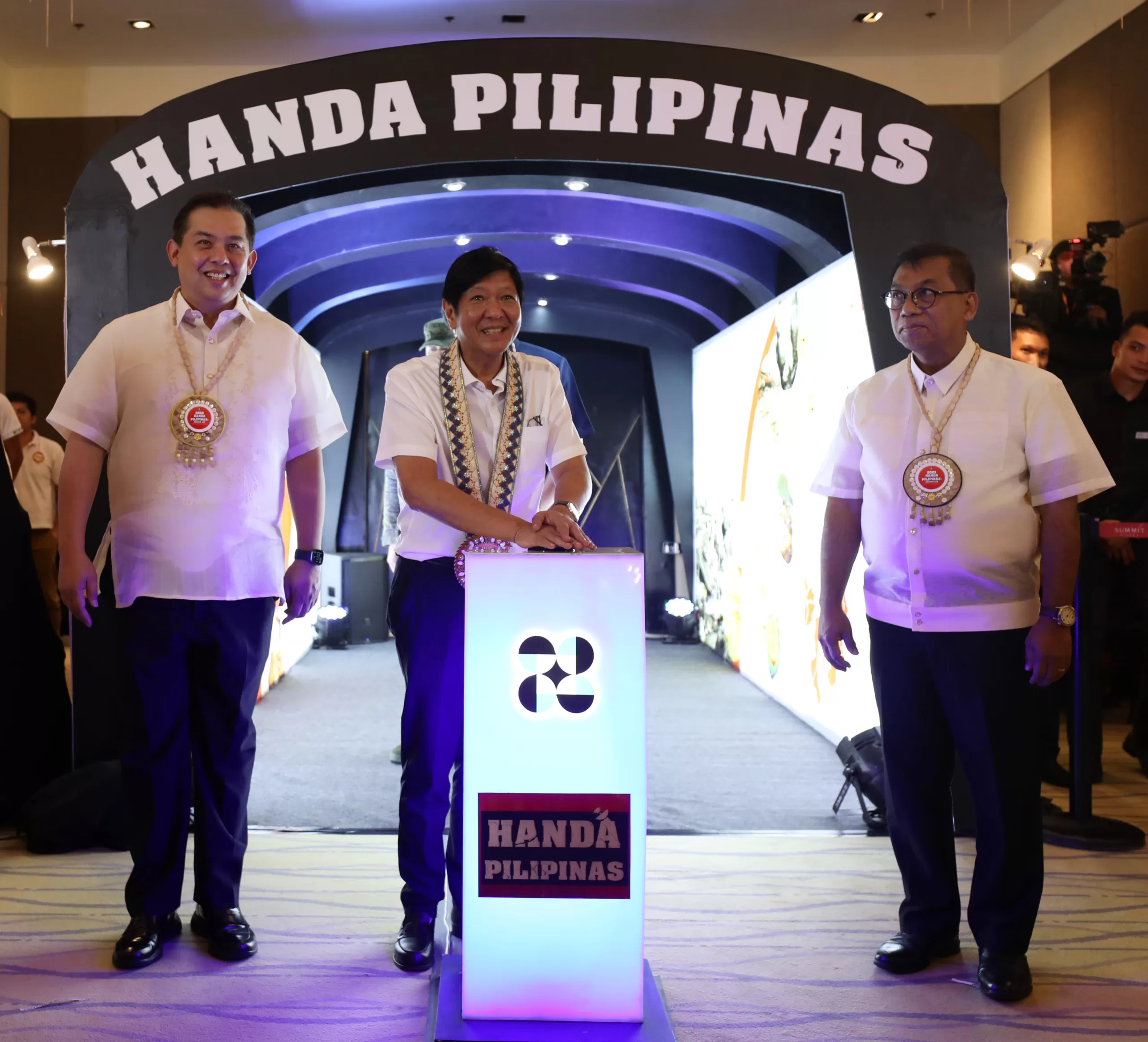News
PBBM: LGUs must have access to disaster management technologies

LESSONS FROM YOLANDA. President Ferdinand R. Marcos Jr. (center) leads the 2023 Handa Pilipinas Visayas Leg opening ceremony, an annual exposition of innovations in Disaster Risk Reduction and Management at the Summit Hotel in Tacloban City on Wednesday (Nov. 8, 2023). The event coincided with the 10th anniversary of Super Typhoon Yolanda, which struck the Eastern Visayas region in 2013. (PNA photo by Alfred Frias)
MANILA – President Ferdinand R. Marcos Jr. on Wednesday emphasized the importance of giving local government units (LGUs) access to technological innovations for disaster risk reduction and management developed and supported by the Department of Science and Technology (DOST).
During the opening rites of the 2023 Handa Pilipinas Visayas Leg at the Summit Hotel in Tacloban City, Marcos instructed the DOST to coordinate with the private sector to fast-track the “widespread adoption and commercialization” of the new technologies for disaster risk prevention, mitigation, preparedness, response, and recovery.
“I am confident that the technologies featured in this event such as the mobile command post, the triaging trailer tent, the collapsible toilet bowl, upgraded emergency disinfection system, fire blanket, unsinkable porta boat and water ambulance, amongst others will be of great help during relief and rescue operations. The emergency food reserve as well as the complementary food and food products are also good additions to our survival kits during calamities,” he said.
“So, let us also remember that collaboration amongst government agencies, local governments, and the private sector, and communities is the key to effective and successful disaster risk reduction and management,” Marcos added.
He said his administration is committed to advancing the country’s disaster resilience and building a “safer, stronger, [and] more resilient Philippines for ourselves and for future generations.”
Marcos said partnership with the private sector would make the new technologies affordable and accessible to LGUs.
“These are crucial to addressing the challenges in disaster risk reduction and staying ahead of the curve in disaster management. The world is rapidly changing. It is imperative that our ways and our strategies adapt and improve as well,” he said.
“Let us also promote public awareness so that every citizen becomes more proactive, better informed, [and] better equipped in times of an emergency. Let us ensure that science and innovation continues to guide us in our endeavors.”
HANDA Pilipinas: Innovations in Disaster Risk Reduction and Management Exposition is an annual event which aims to raise public awareness and adoption of available DOST-developed, supported, and funded technological innovations related to disaster risk reduction and management.
Carrying the theme, “STY Yolanda Remembered: Understanding Risks and Preventing Future Disasters,” the Handa Pilipinas Visayas Leg featured the lessons of Super Typhoon Yolanda which hit Eastern Visayas in 2013 and recognized the institutions that contributed to the rapid recovery of the region through Science, Technology and Innovation interventions.
The event also aims to capacitate the Visayas stakeholders with knowledge and skills in disaster risk and management.
Lessons from Yolanda
Meanwhile, the National Disaster Risk Reduction and Management Council (NDRRMC) said one of the key lessons from the aftermath of Super Typhoon Yolanda (international name Haiyan) is that there is no room for complacency in preparing for disasters.
“Hindi po tayo dapat maging complacent (we should not be complacent), di pa sinasabi po natin (we used to say that) preparedness is the key, but when do we actually say that we have prepared enough?
” National Disaster Risk Reduction and Management Council (NDRRMC) spokesperson Edgar Posadas said in a Bagong Pilipinas Ngayon briefing.
Posadas said among the key policies of the Office of Civil Defense (OCD), the NDRRMC’s supervising body, is the prepositioning of relief goods and items even before even before typhoons and other calamities strike a key policy.
Posadas also added that the government has started the construction of buildings and structures which could be used as “alternative” shelters or centers in the event that the primary ones are put out of service or out of action during disasters.
He also said that they are also maximizing “science-based approaches” especially in the field of early warning and forecasting.





















